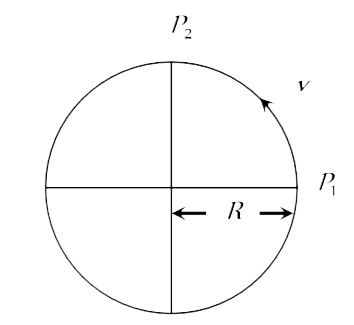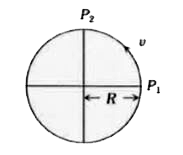Figure below shows a body of mass M moving with the uniform speed on a circular path of radius, R. What is the change in acceleration in going from P1 to P2

Zero
v2/2R
2v2/R
v2R×√2
The correct Answer is:D
Δa=2asin(θ2)=2a×sin45∘=√2a=√2v2R
Similar Questions
Derive an expression for the centripetal acceleration of a body moving with uniform speed v along a circular path of radius r .
View Solutionनीचे दर्शाये चित्र में M द्रव्यमान की एक वस्तु R त्रिज्या के वृत्तीय पथ पर एसमान चाल से गति कर रही है। P1 से P2 तक जाने में त्वरण में परिवर्तन होगा

View SolutionA particle of mass 'm' is moving on a circular path of radius 'r' with uniform speed 'v'. Rate of change of linear momentum is
View SolutionA particle of mass m is moving on a circular path of radius r with uniform speed v , rate of change of linear momentum is
View SolutionA Particle of mass 'M' moves in a uniform circular path of radius 'r' with a constant speed 'v' then its centripetal acceleration is .
View SolutionA particle of mass 'm' is moving on a circular path of radius 'r' with uniform speed 'v'. Rate of change of linear momentum is
View SolutionA particle is moving around a circular path with uniform angular speed (x) . The radius of the circular path is (r). The acceleration of the particle is:
View SolutionA body of mass m is moving with a uniform speed v along a circle of radius r, what is the average acceleration in going from A to B?
View Solution
